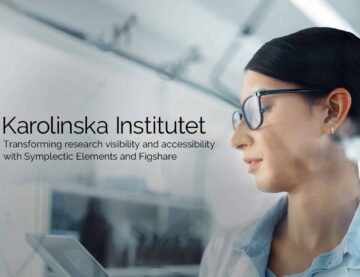
Mission-critical: risks and repercussions presented by China’s research programs
Is China strategically important to the west? How you answer that question might depend on how old you are. A recent survey showed that 36% of US residents under the age of 30 ranked China over the UK as America’s most valuable strategic partner, however just 4% of respondents over the age of 70 felt the same way. While the disparity may be surprising, the fact that the younger generation feel China is more important for the US strategically is perhaps not. But what does this mean for the world of research, with so many of these young people entering higher education and research programs in the US?
A new report published by the Center for Research Security & Integrity offers some sobering thoughts on problems faced by US researchers and others when engaging with their counterparts in China. The report – Transparency and Integrity Risks in China’s Research Ecosystem: A Primer and Call to Action – is a comprehensive analysis identifying and mitigating transparency and integrity risks posed by Chinese research programs, focusing on practices that contradict the norms of some liberal democracies.
The report, summarized below, delivers key findings and recommendations for countries such as the US in dealing with the potential threat these international research collaborations might pose. The findings around risk elements such as transparency and integrity ultimately show the importance of trusted partners like Digital Science in the research ecosystem, including its products Dimensions Research Security and Dimensions Research Integrity.Among the co-authors of the report is Digital Science’s VP of Research Integrity, Dr Leslie McIntosh.
Transparency risks
The report emphasizes a range of transparency issues present in China’s research ecosystem. These risks include:
- Denial of Access: Institutions like the China Aerodynamics Research and Development Center (CARDC) obfuscate their ties to the People’s Liberation Army (PLA), while their websites are inaccessible to foreign viewers.
- Website Discrepancies: The English-language websites of Chinese research institutions often omit critical details, such as departmental structures or research affiliations. For example, the Chinese Academy of Sciences Dalian Institute of Chemical Physics shows significant differences between its English and Chinese websites, with key research information missing from the English version.
- Use of Alternative Names: Certain entities, such as the China Electronics Technology Group Corporation’s 13th Research Institute, operate under alternative names, potentially masking any defense affiliations.
Integrity concerns
The report also investigates integrity issues, which can be broader and more challenging to detect. China accounts for a significant portion of retracted scientific publications due to nefarious practices, including:
- Deceptive Authorship: Researchers have been found to add foreign coauthors to publications to bolster credibility, while others use pseudonyms to avoid scrutiny.
- Fraudulent Publications: The proliferation of “paper mills” that produce fake scientific papers is also regarded as a significant issue, particularly in medical and health sciences.
National security concerns
Many transparency and integrity concerns overlap with national security risks. The report shows:
- Several Chinese research institutions have ties to the PLA and other defense entities, but these affiliations are often concealed in international collaborations.
- Research institutions in liberal democracies may unwittingly collaborate with Chinese entities involved in military research.
Recommendations
Given these concerns, the report provides some timely ways forward in the following recommendations:
Collaboration on exposing transparency and integrity issues
Think tanks, NGOs and academic institutions in liberal democracies should work together to expand on the issues highlighted. The report calls for the creation of a China Transparency & Integrity Tracker, a tool to catalog PRC entities that violate transparency and integrity norms.
Government-led initiatives
Governments should take the lead in identifying and cataloging research misconduct. For instance, US government agencies should sponsor the development of large-scale monitoring systems for questionable publications, using techniques like forensic scientometrics. Governments should also share information on PRC entities and programs acting in bad faith, to assist research institutions in conducting due diligence.
Risk mitigation
Research institutions should develop policies that consider transparency and integrity when deciding whether to collaborate with PRC entities. This includes providing mechanisms for reporting problematic behaviors by Chinese partners. Institutions should also ensure that coauthors verify the integrity of the research they are involved in to prevent deceptive practices.
Public disclosure
Governments and research organizations should create public repositories of information on PRC institutions that have engaged in deceptive practices. These databases would allow informed decision-making when considering collaborations with Chinese research institutions.
Conclusion
Transparency and Integrity Risks in China’s Research Ecosystem: A Primer and Call to Action emphasizes the need for liberal democracies to take a more proactive approach in scrutinizing the transparency and integrity of research collaborations with China – actions that can be supported through the use of tools such as Dimensions Research Security. The risks posed by Chinese research institutions are substantial, and addressing these challenges requires collective action from governments, academic institutions, and civil society organizations. In other words, it’s time to act.
To learn more about how Digital Science and its Dimensions Research Security product can help your organization, click here to arrange a call with one of our experts.



